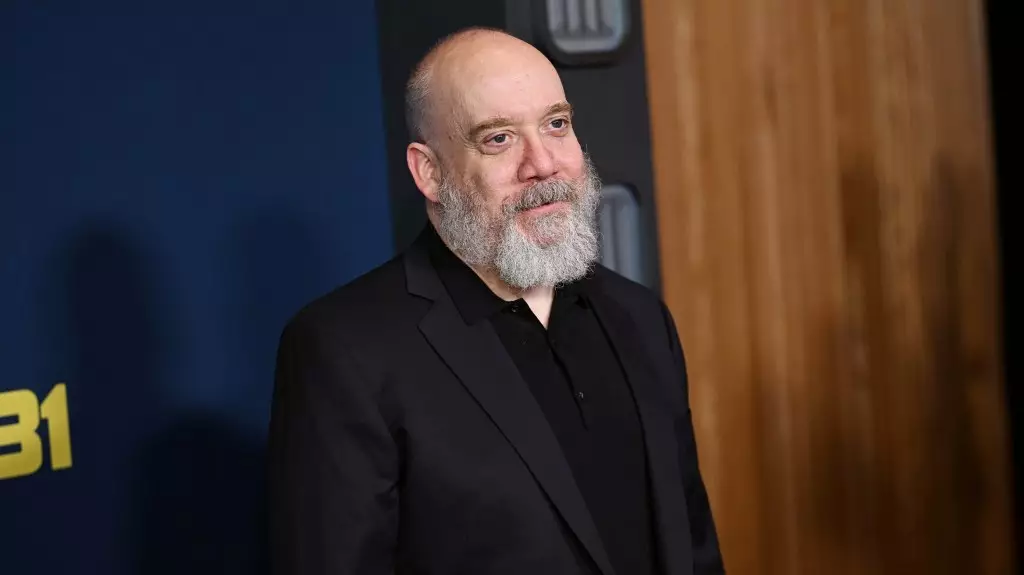The recent revelations surrounding the production of *Downton Abbey: The Grand Finale* cast a long shadow as it marks the end of an era, particularly after the passing of the indomitable Dame Maggie Smith. Paul Giamatti’s reflections on the project painstakingly reveal how the film intertwined with Smith’s spirit, highlighting both the profound absence and the subtle omnipresence she maintained throughout the production process. This isn’t just another melodrama in a long line of prestige TV adaptations; it is a deliberate homage to a woman whose acting prowess shaped the very foundation of the beloved series. The film serves as a bittersweet climax that intertwines joy and sorrow, forcing audiences to reconcile their admiration for a legacy with the heartache of loss.
Giamatti, who made an unexpected return to his role as Harold Levinson, articulates a shared sentiment that reverberates among the cast—one made stronger by the notable absence of the show’s matriarch, Violet Crawley. The idea that the production became a vehicle for mourning, one that encapsulated both the character’s and the actress’s significant roles, adds layers to the viewing experience. Giamatti’s candid acknowledgment that not having Smith present represents a massive void stands out, not merely as an emotional reflection but as an indictment of the industry’s tendency to overlook the human narrative behind art. While the film seeks to celebrate, it is also a solemn reminder that with great creative brilliance comes inevitable loss.
The Surprising Resurrection of Character and Meaning
For many, Giamatti’s return may seem anomalous, especially given his minuscule part in the *Downton Abbey* universe. Still, the unexpected nature of his casting speaks volumes about how films rework character trajectories based on narrative importance rather than perceived status. Yet, there is an underlying tension here—could one argue that this late reincarnation feels forced? Is it a genuine embrace of creative potential or merely a tactic to draw audiences back in? Giamatti himself questioned his own worthiness in the narrative, pondering the significance of his character only to be met with revelations that his role was, in fact, pivotal. This contradiction serves to unearth a central tenet of the *Downton Abbey* franchise: significance often lies hidden in plain sight, mirroring the complex social hierarchies it aims to portray.
The addition of new cast members like Joely Richardson and Alessandro Nivola also adds intrigue. Their involvement suggests growth and continuity, even as they represent a shift—an attempt to rejuvenate the storyline while still clinging to its deep-rooted traditions. Yet, could this be a futile endeavor? The true challenge lies in whether the film can authentically capture the essence that made its predecessors remarkable, without solely relying on the legacy of its renowned veteran actors.
The Emotional Resonance and Genuine Mourning
Executive producer Gareth Neame’s assertion that the film carries added “poignancy” now that Smith has passed underscores a reality often overlooked in the fast-paced film industry—the impact of loss defies commercial appeals. While there’s a tendency to package nostalgia for audiences seeking to relive past triumphs, the emotional weight following Smith’s death transforms this anticipated farewell into a profoundly layered experience. When actors depict a grieving family—mourners not just of a fictional matriarch but of a real-life titan—it blurs the lines between the narrative’s authenticity and the actors’ own palpable loss. This convergence creates a heartfelt sincerity that compels audiences to engage with the story differently, preventing it from becoming mere fan service.
Indeed, *Downton Abbey: The Grand Finale* carries the potential to mirror society’s continual dance with remembrance and forgetfulness. It beckons viewers to consider their own connections to loss and legacy, compelling them to reflect on what truly remains in the wake of cherished figures disappearing from our lives. As fans gear up for its release on September 12, the air is thick with emotion that promises to trap audiences within its mournful whirlpool of nostalgia and homage. It is not just a film; it is a canvas that illustrates the shadows cast by loss while still celebrating the vibrant colors of life’s continuous journey. The question remains: can we embrace the beauty inherent in a tribute crafted from both artistry and grief?


Leave a Reply